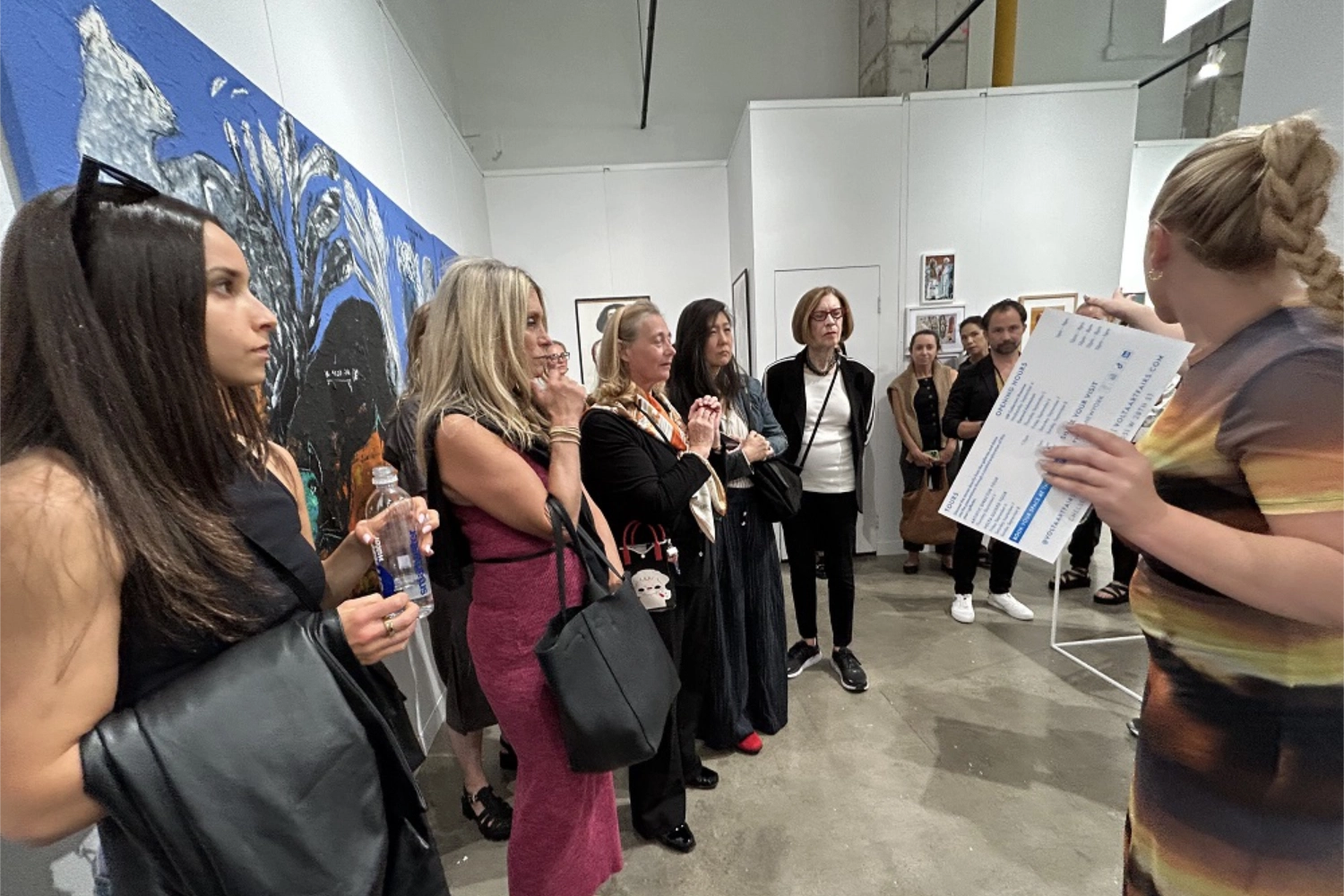
–
Wole Lagunju crée des hybridations ludiques de cultures qui nous entraînent dans un voyage historique sur un mode géographique.
En plus d’intégrer les influences de l’art occidental, Wole Lagunju ajoute une profondeur symbolique à l’expression unique de sa culture yoruba. La précision des détails référentiels affirme la présence ancestrale des représentations symboliques animales, profondément associées à la cosmologie Yoruba, tels que caméléons, oiseaux, serpents et crocodiles…
L’une des plus répandues est l’oiseau qui fait référence à l’orisha Osanyin, le Dieu des herbes médicinales. La représentation de l’oiseau n’est pas anodine et Wifredo Lam dont la mère était d’ascendance yoruba s’en souviendra, lorsqu’il s’installa dans une maison avec deux jardins à son retour à La Havane en 1942. On retrouve l’oiseau à Cuba sous le nom d’« Osun du jardin », placé au sommet d’un support en fer, recevant les offrandes et protégeant les habitants de la maison.
L’oeuvre : « Femme au bâton d’oiseau » présente l’oiseau placé sur son support en fer, bâton emblématique des prêtres, dotés des mêmes pouvoirs de protection. L’oiseau est présent sur les couronnes des dignitaires yorubas : les Obas. De petits paquets d’herbes médicinales sont également cachés à l’intérieur par ces prêtres-herboristes et devins. Ce sont les oiseaux qui préservent le secret des herbes qui y sont cachées. Le Oba ne doit jamais les ouvrir au risque de devenir aveugle.
Wole Lagunju creates playful hybridizations of cultures that take us on a historical journey through a geographical lens.
In addition to incorporating influences from Western art, Wole Lagunju infuses his unique expression of Yoruba culture with profound symbolic depth. The precision of referential details affirms the ancestral presence of symbolic animal representations—deeply tied to Yoruba cosmology—such as chameleons, birds, snakes, and crocodiles.
One of the most prevalent symbols is the bird, which refers to the orisha Osanyin, the god of medicinal herbs. The depiction of the bird is not arbitrary, and Wifredo Lam, whose mother was of Yoruba descent, recalled this when he settled in a house with two gardens upon his return to Havana in 1942. The bird appears in Cuba as the “Osun of the garden,” perched atop an iron stand, receiving offerings and protecting the household’s inhabitants.
In the work Woman with the Bird Staff, the bird is depicted on its iron stand, an emblematic staff of priests endowed with the same protective powers. The bird also appears on the crowns of Yoruba dignitaries, the Obas. Small packets of medicinal herbs are concealed within these crowns by priest-herbalists and diviners. It is the birds that guard the secret of the herbs hidden inside. The Oba must never open them, at the risk of becoming blind.
Rejoignez notre liste de diffusion pour recevoir les expositions de la galerie, les avants premiers des projets, les mises à jour sur nos artistes, nos événements.
Galerie Chauvy © 2024, Tout droits reservés –Cookies – Mentions légales – Création Pontonweb